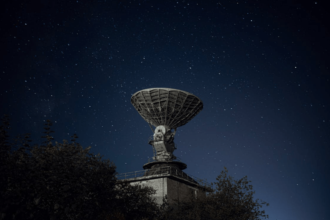As a result of all the challenges faced by Tesla, its longtime partner Panasonic is also suffering losses. It cut its full-year operating profit forecast for its battery unit to ¥115 billion ($771 million) from ¥135 billion, due to slowing demand for Tesla EVs in North America.
shares of Tesla Inc (NASDAQ:TSLA) fell 4.79% on Monday after news about its major battery supplier Panasonic Holdings Corporation (TSE:6752.T) has cut its domestic electric battery production by up to 60%. The Japanese electronics giant explained the downgrade to Tesla due to slower than expected sales of some models.
like us informed ofFor the third quarter of 2023, Tesla missed Wall Street revenue expectations, delivering revenue of $23.35 billion, while analysts forecast $24.1 billion. Additionally, its deliveries fell to 435,059 in the third quarter, falling short of the second quarter’s record of 466,140 and missing the consensus target of about 455,000. Total deliveries of the Model 3 and Y were 419,074, the majority of which were Model Y. Model S and Tesla production dropped from 479,700 in the second quarter to 430,488 in the third quarter amid factory upgrades and an effort to reduce inventory.
Tesla CEO Elon Musk It also reduced expectations regarding the upcoming Cybertruck model, saying it could take up to 18 months for the Cybertruck to contribute significant positive cash flow.
As a result of all the challenges faced by Tesla, its longtime partner Panasonic is also suffering losses. First, Panasonic cut back on automotive battery production in Japan because more expensive Tesla models like the Model S and Model The company aims to achieve “appropriate inventory levels in response to rapidly declining demand”. This cut is likely to last until at least March 2024. Secondly, Panasonic has cut its full-year operating profit forecast for its battery unit to ¥115 billion ($771 million) from ¥135 billion, due to slowing demand for Tesla EVs in North America. Below
Despite some shortcomings in production, Panasonic is hopeful of improvement.
Panasonic CFO Hirokazu Umeda commented,
“I think we can expect some improvement going forward. Still, we didn’t expect the kind of big growth we saw at the U.S. plant. So we will run the Japan factory based on that assumption.
Currently, Panasonic is considering setting up a possible third factory in the US, with the decision to be made by March 2024. Furthermore, the company plans to quadruple its global EV battery production capacity by 2031.
In the US, production levels will remain the same as Tesla pushes its more affordable Model 3 and Model Y cars. One reason for this is that higher-priced EVs may not be eligible for tax breaks or other incentives from government programs. Last year, EV manufacturing was hit by the Inflation Reduction Act (IRA) signed by President Joe Biden on August 16. The IRA laid the foundation for a more sustainable, equitable and safe transportation future. Because investing in a more diverse global EV supply chain can lower battery costs and help people around the world access cleaner transportation, the IRA brings more stability that was lacking in the US EV market.

Darya is a crypto enthusiast who strongly believes in the future of blockchain. Being a hospitality professional, she is interested in exploring the ways in which blockchain can transform various industries and bring our lives to a different level.
Bitcoin Crypto Related Post















